In the summer of my 23rd year I went to Europe for first time, to Florence, Italy specifically. What a life changing experience it was, and I could talk about how it changed me for days, but for the purposes of this experience,
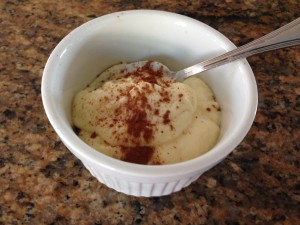 I am going to focus on the eggs… Or actually the lack of eggs.
I am going to focus on the eggs… Or actually the lack of eggs.
It’s not unusual for one’s life to focus particularly on the meals while in Italy, I don’t think. So for each morning I eagerly anticipated my caffe latte and some breakfast-y item from the small deli below the modest hotel where I was staying
with 30 other college students. It wasn’t long before I noticed the absence of eggs in the standard Italian breakfast fare. Custard filled rice pastries – yes, brioche – yes, loaves of fresh breads, fruit and other pastries – yes. Anything resembling savory fried or scrambled eggs, however, was noticeably absent. Certain locales stocked their deli cases with frittata sandwiches…. For lunch. They would chuckle and say I was odd when I requested one to go with my caffe latte in the morning. So I guess I would say this experience simply made me take notice of something that I pretty much took for granted up until then. All of a sudden I noticed, “wow, I REALLY love eggs.” Hmmm, interesting. And look at all of the things that I really love that are all about the eggs: fresh pasta, ice cream, custard, Eggs Benedict, to name a few.
I came back to the US that year and began to actually pay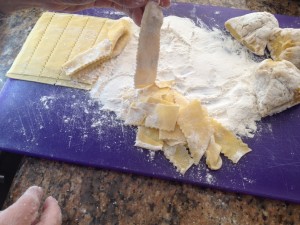 attention to eggs. Martha Stewart was showing the world her backyard chickens and baskets of gloriously multi-colored eggs – pale beige, dark brown, white, ivory, blue (gasp) and green (double gasp!).
attention to eggs. Martha Stewart was showing the world her backyard chickens and baskets of gloriously multi-colored eggs – pale beige, dark brown, white, ivory, blue (gasp) and green (double gasp!).
Years later, I have a chicken coop and 5 lovely sweet hens in my modest Los Angeles back yard that lay different colored eggs, just like Martha did back in the 80’s. My husband built the coop and cares for our sweet birds with a lot of guidance from a magazine (backyard poultry) and website (http://backyardchickens.com). He made it with reclaimed wood leftover at old construction sites and painted it using paint returns from the hardware store, which are always cheaper but any old color that someone didn’t want after all. Our girls all have interesting names, like Julia Child and Lady Gaga, which somehow seem to fit their personalities. And the eggs, oh the eggs, are thick-shelled and rich with glorious orange (not yellow) yolks. They look just like the eggs in Italy. No wonder the pasta was so amazing.
My 2 favorite things to make with my egg bounty are fresh pasta and custard. It is a messy delight to make fresh pasta with my daughters and it is so wonderfully delicious. Plus I feel better about giving it to them because I know it has eggs in it…protein, yay. This custard is truly a staple in my kitchen. Custard pie, custard fruit pie, warm custard with cinnamon and berries, cold custard with ice cream or cake, thinned custard with bourbon as a sauce for bread pudding, and the list goes on and on… So many uses!
Custard
Makes about 4 cups. Works best to make it in the microwave.
2 cups half and half
1 cup whole milk
3 eggs
3 Tablespoons cornstarch
2/3 cup sugar
1-2 teaspoons vanilla
Put milk and half & half in a large glass bowl and microwave for about 3-4 minutes until hot and steaming, but not boiling. In a separate bowl, whisk eggs, cornstarch and sugar until combined well. I like to use a silicone whisk for this. Whisk a cup of hot milk mixture into egg mixture to temper the eggs. Then pour egg mixture into the hot milk mixture, whisking constantly, until combined well. Return to microwave and cook on high in 30 second increments, whisking each time, until it starts to thicken. This will take a few minutes. Remove from microwave and whisk in the vanilla. Store in refrigerator, covered until ready to use.
You can eat this warm or cold at this point, or pour into a prebaked pie shell and bake at 350 for 15 minutes to make a traditional custard pie. You can add fruit (berries work well, or poached stone fruit like nectarines or peaches) to the pie before baking and even sprinkle with sugar if you like.
Fresh Pasta
Makes 2 pounds. You need a food processor and a pasta roller for this recipe
4 cups flour
3 large eggs
6 egg yolks from large eggs
4 Tablespoons olive oil
1/3 cup + ice water
Put the flour in the food processor and process for a few seconds. Mix together all remaining ingredients in a cup with a spout (I use a measuring cup). Turn food processor on, and slowly pour liquids in with the machine running. It should come to a ball in 30-45 seconds. If it looks wet and sticky, add a little flour, and if it looks dry and crumbly and does not come to a ball, add a little more ice water.
Dump out onto plastic wrap or a zip top bag sprinkled with flour and put in either the freezer or on the counter, depending on when you want to finish making the pasta. I typically put a pound in the fridge and a pound in the freezer. Either way, it needs to come back to room temp and rest for about 30-60 minutes before you roll it out.
Cut each one pound ball of pasta into 4 pieces, and roll through the pasta machine one at a time. Keep each piece lightly floured, and start at the thickest setting and work towards a thinner setting. You may not want the thinnest setting, depending on your pasta machine. I find that the second to thinnest one is how I like my fettuccine or pappardelle. Cut each sheet of pasta crosswise into 2 or 3 pieces so they are not so long, and then cut by hand into the shape and thickness that you want. I like fettucine (wide flat noodles), pappardelle (double-wide fettucine), maltagliati (randomly shaped pieces) and little squares can become bow ties or anything else your imagination can dream up. Each time you finish rolling and cutting a part of the dough, flour it and put it on a large floured board or plate or something to keep it from sticking. I also keep in the refrigerator to keep it cool, which also helps to keep it from sticking. Drop into boiling salted water and stir to avoid clumping, and cook for about a minute or 2… taste it to make sure it is cooked to your liking.
Some extra tips for making pasta:
1. After the dough ball has gone through the machine and become a sort of sheet, fold it into 3rd’s and turn it 45 degrees to send it through the roller again. Do this twice, and it will work to knead your dough and also make the edges of the pasta smooth and uniform.
2. Be sure to sprinkle a bit of flour on the pasta as you go or it will stick!
3. You can cut your noodles into any shapes you like by hand, or use a pasta cutting attachment to do something more uniform. If you are going to cut pasta into something like bowties / farfalle or ravioli or something like that, make sure that each one is a separate lightly floured item on your board after it is cut. Those items can be cut, spread out on a cookie sheet or board, frozen, and then dumped into a plastic bag and thrown bag in the freezer. You can dump the frozen pasta from the bag directly into your pot of boiling water, just give it a little bit more time to cook.
4. Separate and lightly flour as your go, so the end product is not gummy. Spread the pasta pretty thin… mountains of noodles become a big sticky mess then you can’t separate it later and if you try to cook it that way it turns into a big glob.
5. Do a little shake to get most of the flour off of your pasta before dropping it in the pot of boiling water and then stir often.
6. Also, use a MUCH bigger pot than you would for dry pasta… fresh flour-covered noodles need a lot of space to swim around in there.
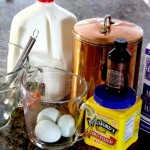
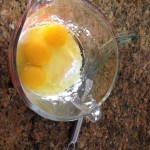
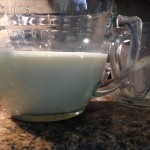
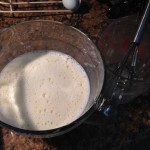
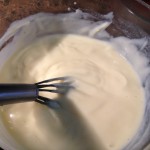
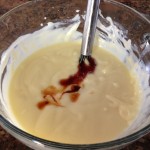
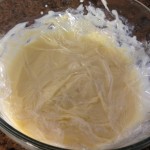
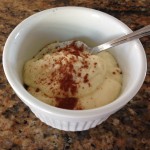
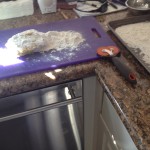
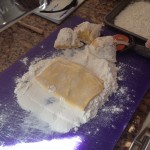
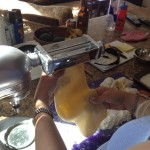
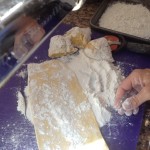
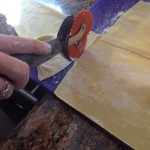
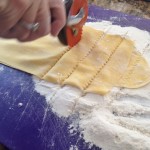
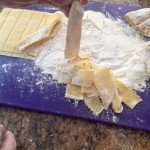
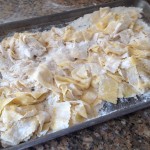
I had a similar European experience when I was 20 and studying in Paris for the summer. Eggs are also very absent from the French “petit dejeuner;” the omelettes the French are famous for are reserved for lunch or dinner. Despite knowing this, one fine morning I was desperate and brazenly ordered a cheese omelette at 10:30 a.m. in a brasserie. That promptly got the attention of a fellow American student who hailed from Radcliffe. She approached me, inquiring, “Are you American?” That event was propitious. I’d been staying in a humble hotel, unable to find suitable long-term student housing. The Radcliffe student was staying with a family in the fancy 16th arrondissement, and poof, within two days, I was domiciled for the rest of the summer in the same home. The major “mandate” to staying with the family was to share dinner with them and practice our French. It was an amazing experience…all because I dared to break the “no eggs for breakfast” rule!
Linda, I love that we had similar experiences! -A